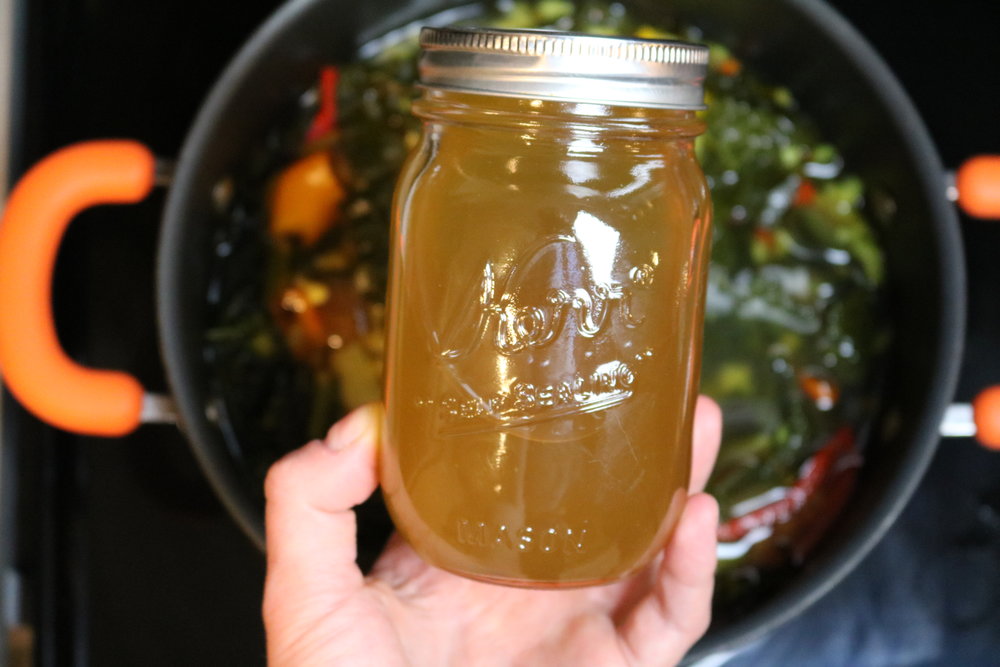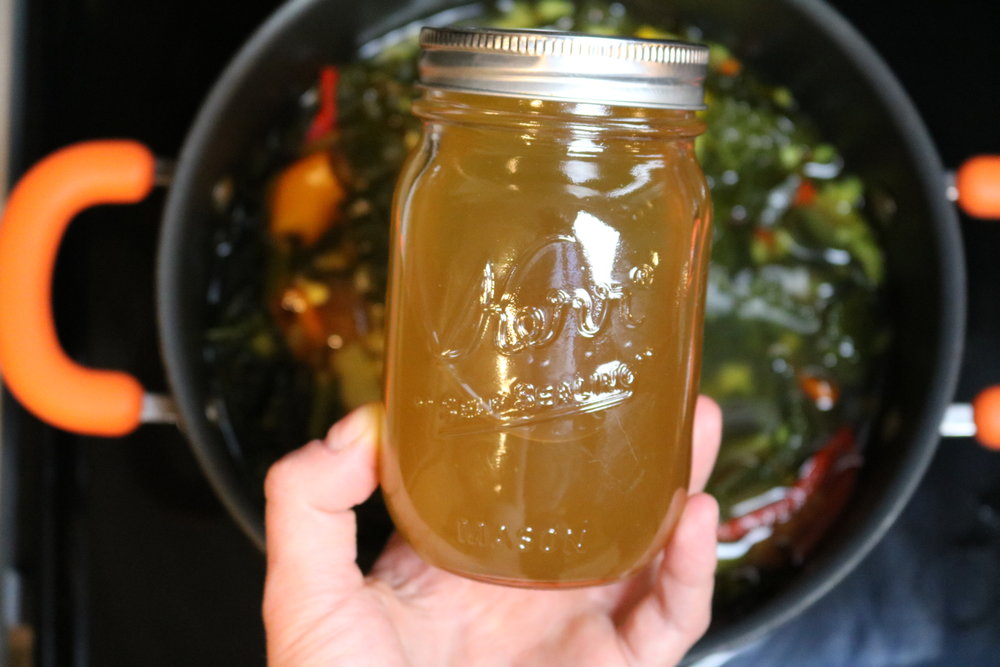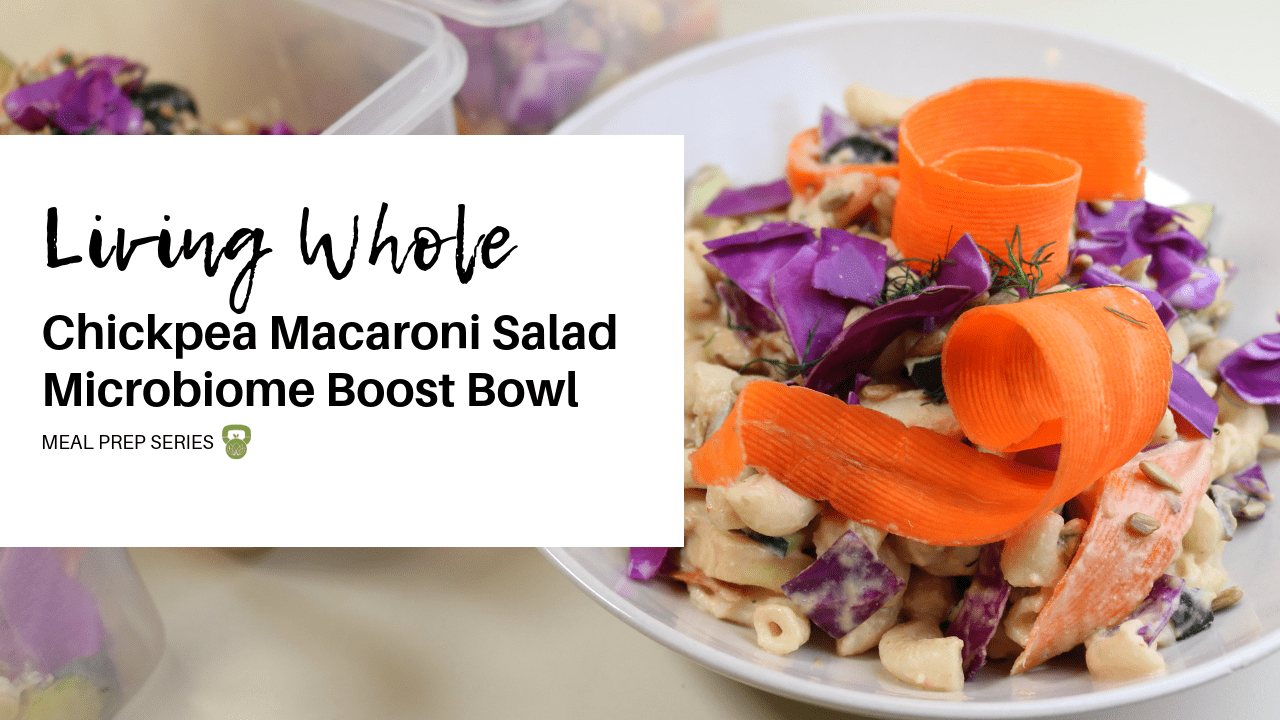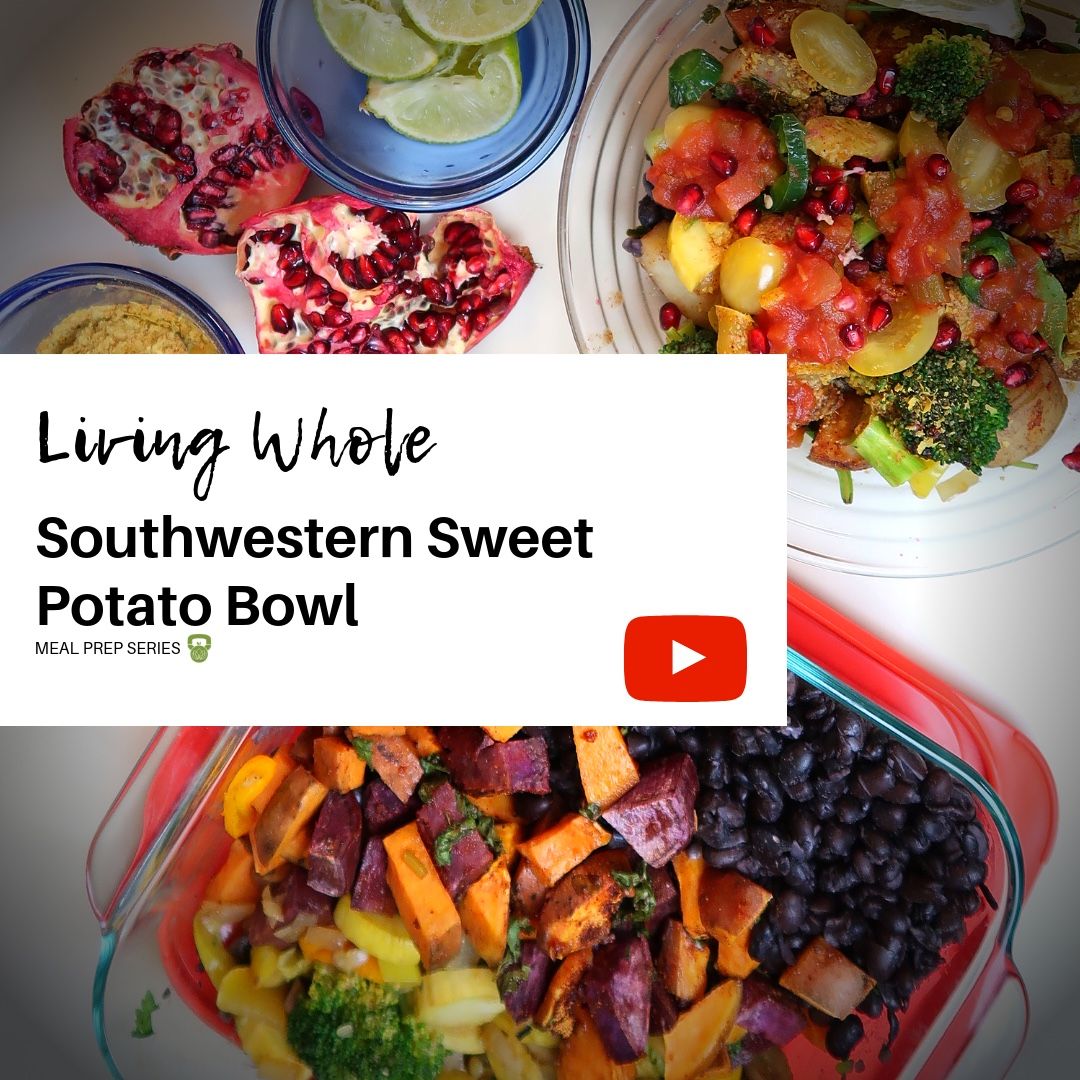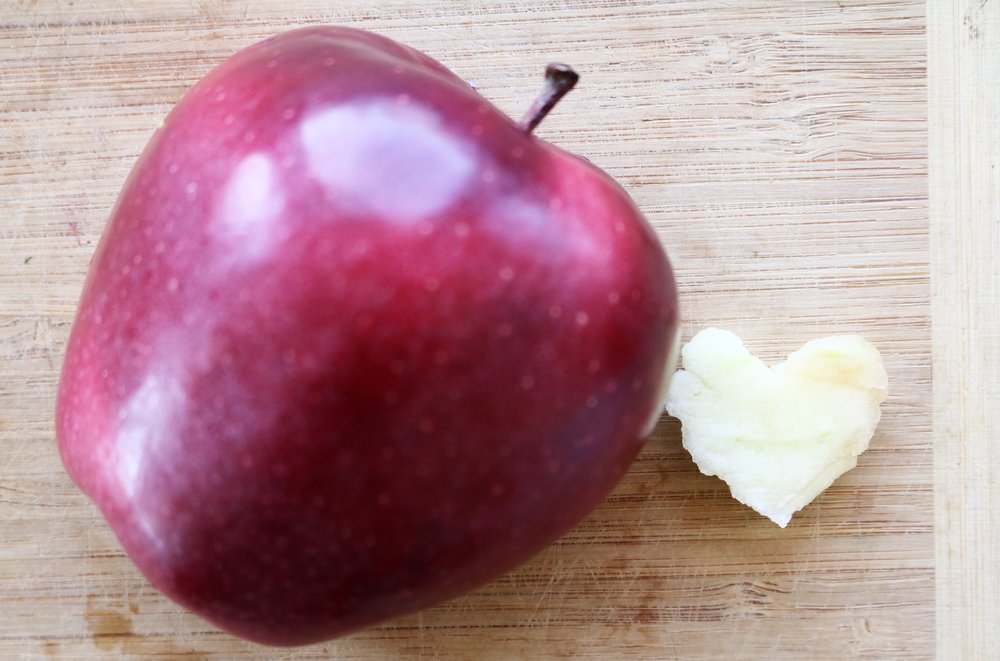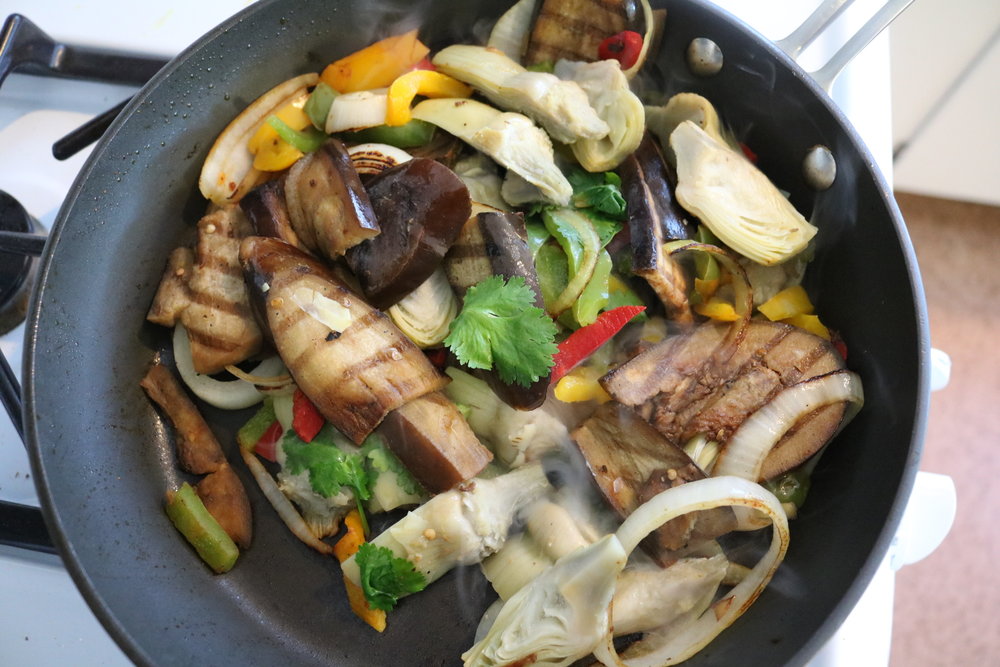Broths are the new rage.. especially bone broth. I have some serious qualms with that and have a nourishing, healing alternative. Digestive healing vegetable broth.
Nutrients are powerful from broths for immunity, cognitive health, digestive function, and joint health. Broths have been the basis for nutrition for centuries. They are the base for soups, sauces, stews, and many more dishes. Vegetable broths are mineralizing and alkalizing. I love to incorporate my veggie broth into all my cooking from simmering vegetables in it to reduce oil use, pastas, cooking quinoa, even as a mini cleanse for digestive rest and restore. I even use my older vegetables that are fixing to perish. I chop them up and simmer them. Freeze and store for later use!
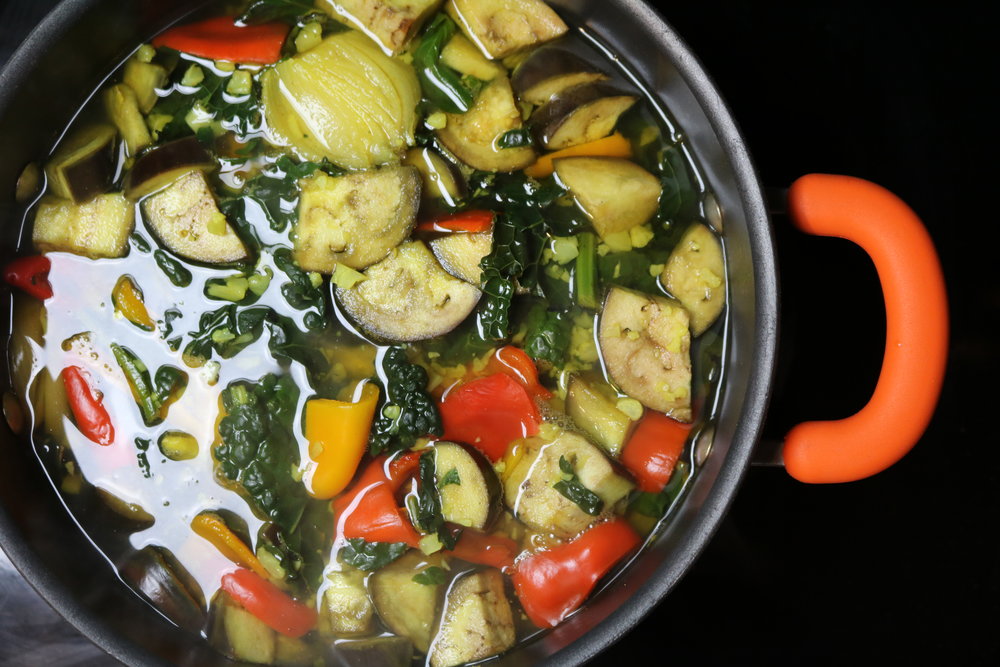
So many people experience digestive issues, ranging from IBS to continual gas/bloat and food intolerances. With our digestive tracts, bioavailability plays a huge role and is individual and even the digestive based issues are not just localized in the gut. Symptoms present anywhere within the body. This can be expressed in joint aches and pains, arthritis, depression, decreased cognitive function or “fogginess,” skin issues, digestive disturbances, anxiety, poor sleep, fatigue, and generally malaise.
Vegetable broth is a great way to supplement and rest your digestive tract. It can assist you in consuming bioavailable minerals and nutrients that are essential for healing and restoring the gut wall.
SO with all that.. why NOT bone broth or other animal based bone broths?
This is straight from nutritionfacts.org and I could not have stated it better.
“The toxicological issues associated with production and processing of meat, issues like the presence of various toxic contaminants, from dioxins and PCBs to the cooked meat carcinogens. Carcinogenesis, the development of cancer, may be the main concern, but there are a number of other toxic responses connected with the consumption of meat products. Lead, for example, can be toxic to the nerves, gastrointestinal tract, bone marrow, and kidneys.
Where is lead found in the food supply? In general terms, the highest levels of lead, as well as arsenic and mercury, are found in fish. Sardines have the most arsenic, but tuna may have sardines beat when it comes to mercury and lead.
The problem is that fish-consumption advisories related to human health protection do not consider the fish by-products fed to farmed animals like farmed fish. If some tilapia are fed tuna by-products, they could bioaccumulate heavy metals and pass them onto us. The highest levels have been found in frozen sole fillets, averaging above the legal limit for lead.
Lead exposure has been shown to have adverse effects on nearly every organ system in the body. Symptoms of chronic exposure range from memory loss and constipation to impotence and depression. This is, all after, pretty hefty exposure, though. But we now know that blood lead levels in the range currently considered acceptable are associated with increased prevalence of gout and hyperuricemia, elevated levels of uric acid in the blood. According to the Centers for Disease Control and the World Health Organization, a blood lead level needs to be less than 25 (micrograms per deciliter) to not be elevated. And so, you’d assume that at all these values under 25, there’d be no relationship with health outcomes, but even throughout this “acceptable” range, lower lead means lower uric acid levels and lower gout risk. So, even blood lead levels 20 times below the acceptable level can be associated with increased prevalence of gout. These data suggest that there is no such thing as a “safe” level of exposure to lead.
And once it gets in the body, it tends to stay in the body. It builds up in the bones, such that it may take 30 years just to get rid of half; so, the best strategy would be to not get exposed in the first place.
If it builds up in bones, though, what about boiling bones for broth? We know bones sequester lead, and such lead can then leach from the bones; so, they figured that bone broth made from the bones of farmyard animals might carry a risk of being contaminated with lead. Who eats bone broth? Bone broth consumption is encouraged by many advocates of the paleo diet. Online, you can learn all about the benefits of bone broth, but what they don’t mention is the theoretical risk of lead contamination, or at least it was theoretical, until now. Broth made from chicken bones was found to have markedly high lead concentrations, up to a 10-fold increase in lead. In view of the dangers of lead consumption to the human body, they recommend that doctors and nutritionists take the risk of lead contamination into consideration when advising patients about bone broth diets.”
Check out nutritionfacts.org for more amazing research!

